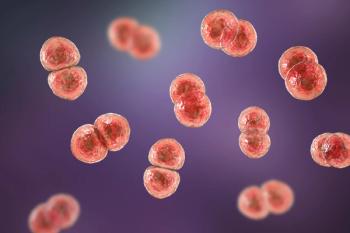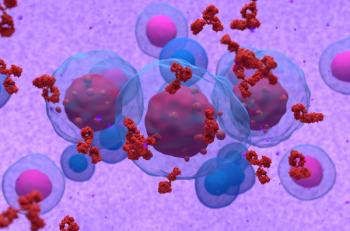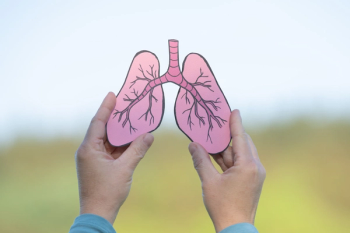
ASHP Midyear: Expert Highlights New Non-Statin Medication and Combination Therapy Strategies
Both statins and newer non-statin medications are important in combination to effectively lower atherogenic lipid levels and reduce cardiovascular risk.
John Bucheit, PharmD, ambulatory care pharmacist and associate professor at Virginia Commonwealth University School of Pharmacy, highlights the continued relevance of the 2018 Blood Cholesterol Guidelines, while also emphasizing the importance of newer resources like the 2022 Expert Consensus Document and the 2023 Chronic Coronary Disease Guidelines for guidance on managing lipids with non-statin therapies. He speaks on the complementary role of statins and non-statins in lowering atherogenic lipid particles, particularly low-density lipoprotein cholesterol, to reduce cardiovascular risk and explains the potential advantages of combination therapy, including the ability to achieve robust LDL lowering with potentially fewer adverse effects.
Pharmacy Times: What are some of the most recent clinical guidelines for lipid management that are non-statin?
John Bucheit: So the 2018 Blood Cholesterol Guidelines remain our standard of care. However, several new agents have been approved since these guidelines were published, so we do need to find other resources, and 2 that would I like to highlight are the 2022 Expert Consensus Document. This is not technically a guideline, but this provides comprehensive overview of non-statin therapies, and it includes the newer agents. So that's one that I definitely think is is useful. While all of the societies and specific disease states may have lipid guidelines and recommendations, I would like to highlight one other one, which is the 2023 Chronic Coronary Disease Guidelines. So this was led by American College of Cardiology and American Heart Association, and this really provides some recommendations for lipid management, including non-statins on people with chronic coronary disease.
Pharmacy Times: What are the benefits of non-statin therapies compared with statin? What are some of the different therapies available?
Bucheit: So when I, when I talk about statins and non-statins, I think we need to think of them as we're all trying to accomplish the same goal. Okay? So we want to lower the aptitronic particles, or mostly referring to [low density lipoprotein] cholesterol, and using both statins and non-statins. So some of the potential advantages of using combination therapy with statins, if patients tolerate that with non-statins are, we can still get that same robust lowering and low density lipoprotein cholesterol, but may have less adverse effects when using these 2 agents together. So we're still exploring in our clinical trial data on what the best combinations are, but I do think we are moving to a place where our combination therapy with statins and non-statins is going to be a bigger role in lipid management going forward.
Pharmacy Times: How should pharmacists best counsel patients when starting a non-statin therapy?
Bucheit: I think the most important counseling point for any lipid lowering medication is this medication is not going to work unless you take it. So by talking to the patient and explaining to them that whether your cholesterol levels are high or low, you may not feel good or bad, but this medication is important to lower these levels, to prevent cardiovascular events and to live longer and so you may not, hopefully without any adverse effects, which are pretty low with the non-statin agents, patients take these medications and they don't really feel much difference. However, they're lowering that burden of atherogenic particles in their body, like LDL cholesterol, to reduce their risk.
Pharmacy Times: How can pharmacists address patient concerns about the cost and potential adverse reactions of these therapies?
Bucheit: These are important questions. Cost and adverse effects are always things that we have to keep in mind when talking to patients. Costs are challenging in that a lot of these new non-statin agents are branded products, so they are more expensive. So I think us, as clinicians and pharmacists, we need to be offering patient-centered care. So as I mentioned earlier, combination therapy may be important for these patients. So using non-statins that are generic, with statin medications that are also generic may have lower costs associated with them and still provide optimal outcomes. Moving into some of the newer non-statin medications may require some specialty services to help get those services covered. I'll also say that the adverse effects for both statins and non-statins are pretty low. So these are well tolerated medications, so making sure that patients are knowledgeable and educated on what are the adverse effects and what are the likely adverse effects of these medications is really important. When these do come up, we need to make sure that we're correctly addressing them, and then lastly, we have lots of options. So if one medication doesn't work, there are other options that we can try for our patients.
Pharmacy Times: What are common barriers to access, and how can these barriers be addressed?
Bucheit: So coverage, cost, and access are sometimes major barriers to getting on non-statin therapy. The hope is that as we're seeing more and more positive outcomes data with these medications, the coverage will improve for these agents, I would recommend for people who are struggling or clinicians who need extra help getting these medications covered for their patients and getting better access, look for a lipid specialist near you to make that referral, and they're really the experts in helping patients get on the right therapy, but also accessing the right therapy too.
Pharmacy Times: Is there anything else you would like to add?
Bucheit: The only thing I would like to add is that when we're talking about cardiovascular health and cardiometabolic health, lipids is only one part of the puzzle, and so we need to make sure that we're holistically helping our patients, speaking to them about what they're eating, their activity level, looking at their blood pressure and the blood glucose levels to see if they have diabetes, discuss weight management strategies. We need to holistically help these patients and address all these factors as we're trying to optimize their cardiovascular health.
Newsletter
Stay informed on drug updates, treatment guidelines, and pharmacy practice trends—subscribe to Pharmacy Times for weekly clinical insights.
















































































































































































































